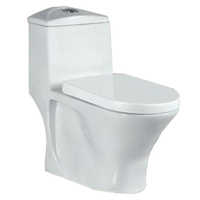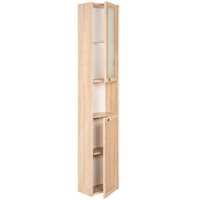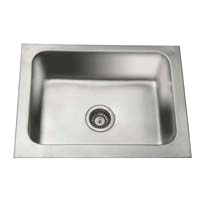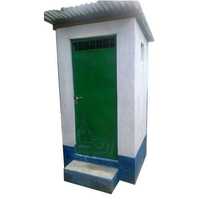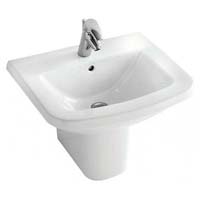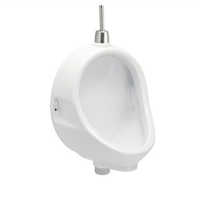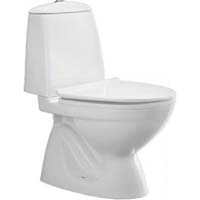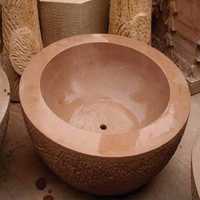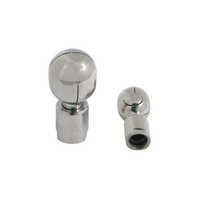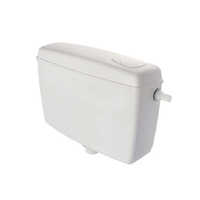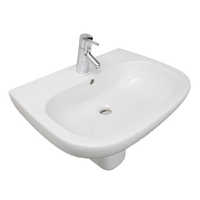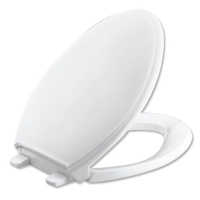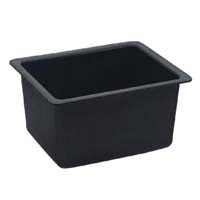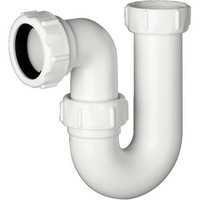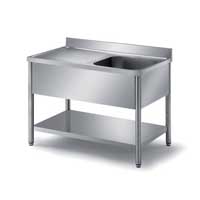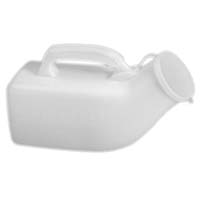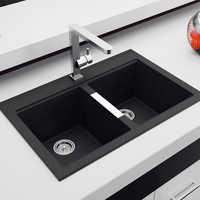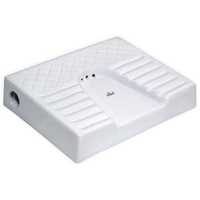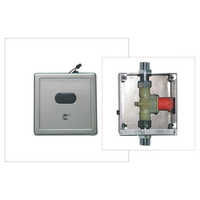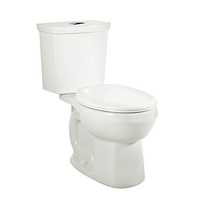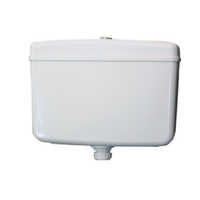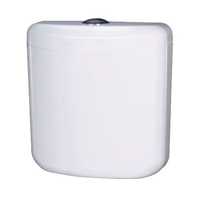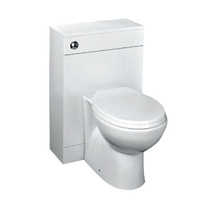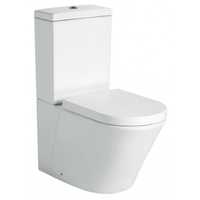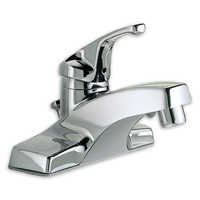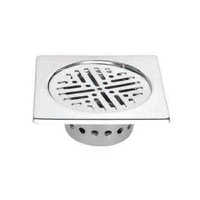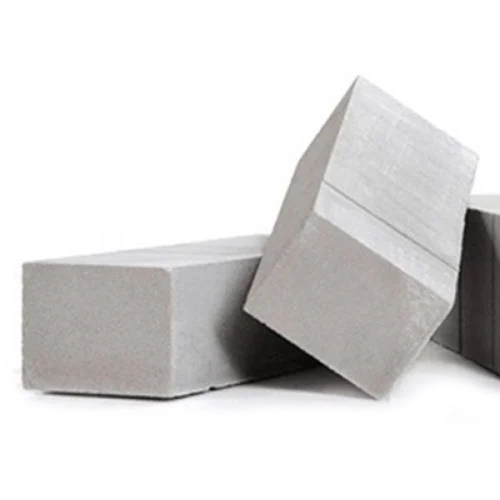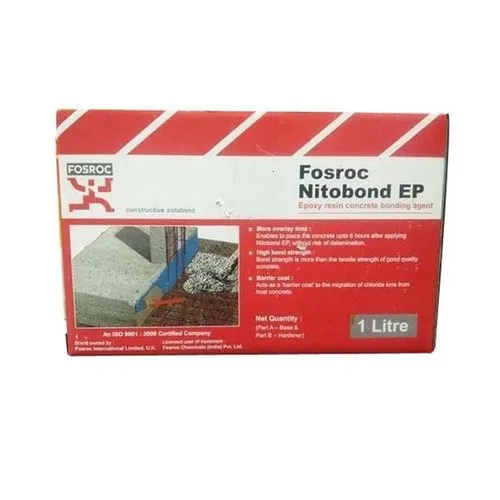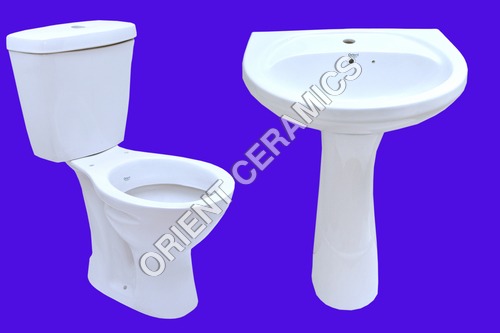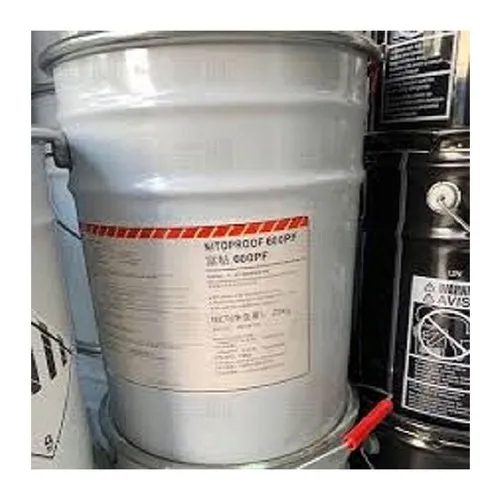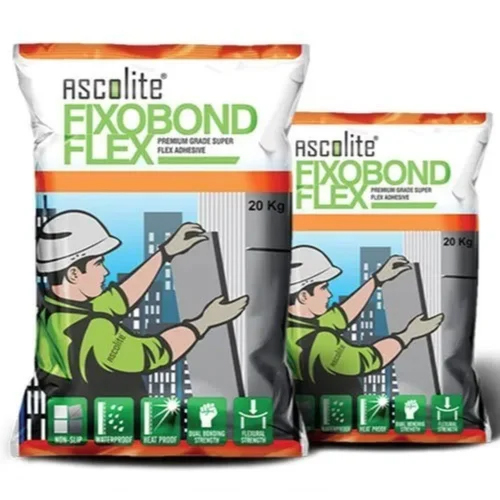Sanitaryware
(14189 products)
Related Categories
AAC Blocks
Aluminum Composite Panels
Architectural Hardware
Bathroom & Toilet Accessories/Fittings
Bricks
Bright Bars
Bucket Elevator
Builders & Construction Hardware
Building Facilities
Building & Construction Material & Supplies
Building Ceramic
Building Coating
Building Glass
Building Metallic Materials
Building Plastic
Bus Shelter
Cement & Sand
Chimney
Clean Room Equipment
Commercial & Residential Land
Commercial Property
Construction Chemicals
Construction Equipment
Construction Materials Stocks
Decorative Laminates
Doorbell
Doors/Windows Accessories & Fittings
Doors/Wooden Door Panels
Elevators, Lifts & Escalators
Fabricators
Fire Bricks
Fireproof/Flameproof Materials
Floor Tiles
Flooring
Fountains
Furniture Fittings & Fixtures
Gates & Grills
Glass & Glass Products
Granite
Heat Insulation
Hooks & Mounts
Industrial Property
Lime & Lime Products
Locks
Manhole Covers
Marble
Modular Toilet
Nozzles
PVC Doors
PVC Products
Paint & Allied Products
Paint Brushes
Painting Equipments & Maintenance
Plywood
Portable Cabins
Prefabricated & Portable Buildings
Property For Lease
Property For Rent
Real Estate Agents
Residential Property
Roof Tiles
Roofing Systems
Sandstone
Sanitaryware
Scaffolding
Sheet Metal
Slate Stone
Slotted Angles
Sluice Gate
Soundproofing Materials
Stone
Texture Paint
Tiles
Timber, Timber Products & Plank
Undertaking Contracted Projects
Vinyl Flooring
Wall Materials
Wall Tiles
Wallpaper
Water Tanks
Waterproof Materials
Waterproofing Chemicals
Top SanitarywareCategories
Explore More Categories
Product Showcase
White Artisian Water Closet
Price: 11200 INR (Approx.)/Piece
MOQ - 100 Piece/Pieces
Feature - Good Quality
Color - White
Size - 700 x 370 x 745 mm
10 Years
Business Type: Manufacturer | Exporter
PRAYAG POLYMERS PRIVATE LIMITED
Any Color Ceramic Sanitaryware Set
Price: 3000.00 - 4000.00 INR (Approx.)/Piece
MOQ - 300 Piece/Pieces
Material - Ceramic
Color - Any Color
19 Years
Business Type: Manufacturer | Exporter
ORIENT CERAMIC
Verified Exporter
( Accepts only Foreign Inquiry)
White Anglo Indian Seat Cover
Product Type - Seat Cover, Other
Color - White
Shape - Other, Oval
Business Type: Manufacturer | Distributor
LINUM CERAMIC
Yellow Reducing Bush
Price: 50 INR (Approx.)/Piece
MOQ - 100 Piece/Pieces
Surface Finishing - NICKLE PLACTED AND SS FINISHING
Product Type - Other
Material - Stainless Steel
5 Years
Business Type: Manufacturer | Exporter
METAL CRAFT INDUSTRIES
Durable Stainless Steel Prison Toilet With Seat Cover
Price: 48500.00 - 49800.00 INR (Approx.)/Pallet
MOQ - 10 Pallet/Pallets
Structure - One Piece
Feature - Durable
Product Type - Toilet Seats
17 Years
Business Type: Manufacturer | Exporter
BLUESTAR SANITARY INDUSTRIES PRIVATE LIMITED
Hot and cold water Filler with Hand Shower
Price: 1300 INR (Approx.)/Unit
MOQ - 100 Unit/Units
10 Years
Business Type: Manufacturer | Distributor
SHANTI VENTURES
Indian Inquiries Only
Metal Chrome Plated Brass Waste Coupling
Price: 100 INR (Approx.)/Piece
Surface Finishing - Chrome Plating
Structure - One Piece
Material - Metal
3 Years
Business Type: Manufacturer | Distributor
RATHOD ENTERPRISE
Pedestal Bathroom WB
Price: 11.00 USD ($) (Approx.)/Piece
MOQ - 500 Piece/Pieces
6 Years
Business Type: Manufacturer | Exporter
GREPL INTERNATIONAL
Verified Exporter
( Accepts only Foreign Inquiry)
Wall Hung
Price: 3000.00 - 15000.00 INR (Approx.)/Piece
MOQ - 100 Piece/Pieces
4 Years
Business Type: Distributor | Trading Company
SHREE ENTERPRISE
Indian Inquiries Only
Concrete Saucer Drain
Price: 350.00 - 2000.00 INR (Approx.)/Piece
MOQ - 100 to 10 Lakhs Piece/Pieces
6 Years
Business Type: Manufacturer | Trading Company
ACME CC PRODUCTS
Indian Inquiries Only
White Water Closet P Type
Price: 150 INR (Approx.)/Piece
MOQ - 100 Piece/Pieces
Product Type - Toilet Seats
Material - Glass
Size - 53 x 41 cm
13 Years
Business Type: Manufacturer | Exporter
ANTIQUE CERAMICS
Verified Exporter
( Accepts only Foreign Inquiry)
Round Easy To Clean Scratch Resistant Attractive Look Glass Bowl Wash Basin For Bathrooms
Price: 2,740 INR (Approx.)/Piece
MOQ - 100 Piece/Pieces
Structure - One Piece
Product Type - Bathroom Accessories
Material - Glass
6 Years
Business Type: Manufacturer | Supplier
APL INTERIORS
Green Single Bowl Kitchen Sink With Drainboard
Price: 1200.00 - 3500.00 INR (Approx.)/Unit
MOQ - 16 Unit/Units
Feature - Available With Drainboard
Surface Finishing - Polished
Product Type - Other
1 Years
Business Type: Manufacturer
T. N. STEELS
Indian Inquiries Only
Stainless Steel Anti Cockroach Grating Installation Type: Floor Mounted
Price: 650 INR (Approx.)/Piece
MOQ - 1 Piece/Pieces
Surface Finishing - cp
Structure - One Piece
Product Type - Bathroom Accessories
6 Years
Business Type: Manufacturer
R K SANITATIONS
Indian Inquiries Only
Glossy Finish Commercial One Piece Toilet
Price: 1750.00 - 2050.00 INR (Approx.)/Piece
MOQ - 1000 Piece/Pieces
Structure - One Piece
Feature - Glossy finish, Pure whiteness
Material - Ceramic
13 Years
Business Type: Manufacturer | Distributor
DALWADI CERAMIC WORKS
White Acquaviva Waterfall Bathtub
Price: 1223000 INR (Approx.)/Unit
MOQ - 10 Unit/Units
Color - White
Product Type - Bathtub
Material - Ceramic
2 Years
Business Type: Manufacturer | Distributor
Aanshi Enterprise
One Piece Toilet Seat
Price: 1500.00 - 5000.00 INR (Approx.)/Piece
MOQ - 100 Piece/Pieces
3 Years
Business Type: Manufacturer | Exporter
KESARI INTERNATIONAL
White 18X13 Wash Basin
MOQ - 500 Piece/Pieces
Surface Finishing - Glossy
Structure - One Piece
Feature - High Quality
Business Type: Manufacturer | Exporter
KCM IMPEX
Verified Exporter
( Accepts only Foreign Inquiry)
White 4 Seater Trailor Mounted Mobile Bio-Toilet
Price: 1000000.00 - 2000000.00 INR (Approx.)/Piece
MOQ - 1 Piece/Pieces
Feature - High Quality & Durable
Structure - One Piece
Product Type - Toilets
1 Years
Business Type: Manufacturer | Distributor
AKISHA ENGINEERING SOLUTION SERVICES PRIVATE LIMITED
White Electronic Water Closet
Price: 99180 INR (Approx.)/Piece
MOQ - 1 Piece/Pieces
Color - White
Product Type - Toilets
Material - Ceramic
4 Years
Business Type: Manufacturer
VIKAS PAINTS
Indian Inquiries Only
Durable Copper Kitchen Sink
MOQ - 25 Unit/Units
Feature - Durable
Surface Treatment - Polished
Product Type - Other, Kitchen Sink
1 Years
Business Type: Manufacturer | Supplier
UNIQUE DESIGN
White Table Top Basin
MOQ - 100000 Piece/Pieces
Shape - Oval
Color - White
Finish - Glossy
17 Years
Business Type: Manufacturer
GLINT FAUCETS INC
Indian Inquiries Only
Indian Inquiries Only
White Symphony Seat Cover
Price: 150.00 - 800.00 INR (Approx.)/, Piece
MOQ - 500 , Piece/Pieces
Structure - Two Piece
Product Type - Toilet Seats
Material - Plastic
12 Years
Business Type: Manufacturer | Exporter
JAY PLASTIC
Sanitaryware Manufacturers | Suppliers in India
| Company Name | Location | Member Since |
|---|---|---|
| Orient Ceramic | Thangadh, India | 19 Years |
| Bluestar Sanitary Industries Private Limited | Muzaffarnagar, India | 17 Years |
| Glint Faucets Inc | Ghaziabad, India | 17 Years |
| Annexy International | Morbi, India | 16 Years |
| Antique Ceramics | Thangadh, India | 13 Years |
| Dalwadi Ceramic Works | Thangadh, India | 13 Years |
| Filtotech Air Control System Private Limited | Kolkata, India | 13 Years |
| Jay Plastic | Rajkot, India | 12 Years |
| Supreme Ceramic | Thangadh, India | 11 Years |
| Prayag Polymers Private Limited | New Delhi, India | 10 Years |
What is Sanitary Ware
Appliances that are used in sanitary installations are collectively referred to as "sanitary ware." In most cases, it consists of things like bathtubs, toilets, washbasins, and the like. Porcelain, which is formed of clay and covered with enamel, is the material that is usually used to craft this item. In modern times, sanitary equipment may be crafted from a wide variety of diverse materials, including acrylics, metals, and even glass. On the other hand, the emphasis of this paper will be on sanitary crockery made of porcelain, more specifically sanitary kaolin. This industry is one of the most important in the world, and Chaozhou, a relatively tiny city in southern China, is home to a significant portion of its manufacturing facilities. This town is well-known for the hundreds of enterprises that are dedicated to the production of sanitary gear. However, there are a lot of other nations that make sanitary equipment as well, and most of them use highly sophisticated manufacturing procedures. Products classified as sanitary ware have a vitreous china body that has been fired at temperatures more than 1200 degrees Celsius. Burning at a high temperature is one of the primary conditions that must be met in order to get sanitary ware suitable for industrial and household use.
Properties of Sanitaryware
To keep up with the quality of the competition, they must conform to a particular standard just like any other product. The minimum weight that sanitary ware must be able to support is 400 kilograms, and it must have a shiny surface so that it is easy to clean. The water absorption rate must be less than 0.5 percent. Clay, quartz, and feldspar are the three primary materials that must be included in the production of sanitary ware. Ball clay or hygienic kaolin may be used as the clay in this process. The sanitary ware is produced by first mixing the three basic components, then casting it, and finally firing it. The materials that were selected not only gave great resistance to scratching but also had the capacity to sustain significant weight. The use of quality sanitaryware may have an effect on the amount of money saved as well as the amount of water saved. There is a broad variety of materials and designs available for the manufacture of these sanitary items, which helps to increase the efficiency with which they dispose of waste:
Sanitary goods are often installed in places like toilets and bathrooms because of their low water absorption. As a result, they continue to be encompassed by water and moisture. As a consequence of this, it is essential for them to have a low rate of water absorption. Sanitary ware that has a high propensity to absorb water will be susceptible to deterioration and will have a reduced lifespan.
1. Heavy load-bearing capacity: The minimum weight that a sanitary ware product should be able to support is 400 kg. This is done to ensure that the product does not fracture or shatter when subjected to a significant amount of pressure.
2. Longevity: A good indicator of the quality of the sanitary gear is its longevity. It is put to use on many occasions every single day. As a result, it is essential for you to get gear that is sturdy and will continue to serve you for a considerable amount of time.
The surface that is simple to clean Hygiene is still one of the most important qualities that should be included in every sanitary ware product. Diseases of the worst kind may be spread by using a toilet seat or urinal that is unclean. At every stage, it should be sanitized and conducive to good health. Because of this, the surface has to be resistant to stains, simple to clean, and impervious to dirt.
When selecting sanitary ware, one of the most important considerations to make is the quantity of water that will be saved. Consequently, an excellent product will properly control water.
Types of Sanitarywares Items
The different types of sanitaryware items are:
Washbasin: The wash basins may be found on the market in a variety of designs and dimensions of varying sizes. There is an option for either a single or a double tap hole in flat-back basins. Every single one of the wash basins needs to be made of a single piece of material and ought to have a slotted overflow hole. Each of the interior angles has been crafted in such a way as to make cleaning easier. The washbasins each have a circular waste hole on the bottom that may be removed as needed. The sinks come complete with a built-in soap dish that has a drain that leads directly into the bowl below it.
Sinks: These are rectangular containers with a shallow depth that are ideal for use in laboratories or kitchens. The kitchen sink shown in Fig. 25.2 is one that is used on a regular basis. It is made in a single piece and may come with or without a rim, depending on your preference. A slope has been added to the floor of the sink that leads in the direction of the waste outflow. There is a circular waste hole installed in each of the sinks. Every single one of the kitchen sinks has a draining board attached to it, and it is positioned to the right of the person using the sink. In certain sinks, there is an additional provision for overflow slots in the form of a weir.
The Bathtub: There are many different kinds of materials that may be used to construct bathtubs. Copper baths were common in the past, but their usage has since died out in modern times. In the not-too-distant future, bathtubs made of fiberglass and aluminum alloy will appear and take the place of older baths. The bath may have a parallel or tapered design, with the latter being the more common option. It has one pipe for filling it and one exit that ranges from four to eight centimeters in diameter. In some arrangements, there will be one faucet for the provision of hot water and another for the supply of cold water. A single overflow pipe, which may collect any water that accumulates in the bathtub, should also be installed there. The waste pipe of the bathroom is outfitted with a trap so that noxious gases do not make their way into the bathroom itself.
Flushing Cisterns: After usage, they are poured into urinals and water closets to complete the flushing process. There are a few different flavors of flushing cisterns to choose from. Low-level cisterns are designed to function at a height of not more than 30 centimeters (cm) between the top of the pan and the bottom of the cistern. This is the maximum height that should be used. Plastic cisterns are now also a product that can be purchased in today's market.
Water-Closet: A trap is what connects this sanitary equipment, which is designed to accept human waste directly, to the pipe that carries soil.
Urinals: Urinals that have a bowl shape are made up of a single component. Each urinal has two holes pre-drilled into the side for mounting it to the wall, and these holes are given as standard. There is an outlet horn supplied at the bottom so that it may be connected to the trap. The inside surface is uniform and smooth, which helps to ensure that the flushing process goes smoothly. In order to ensure that urine may easily drain out of the urinal, its base has been designed with a slope that is steep enough to go in the direction of the exit. Urinals of the bowl kind often have a flushing rim that is linked to the flushing cistern by a flushing pipe. Bowl urinals are also known as water closets. The urinal shown in figure 25.10 is of the bowl variety.
Materials Used to Make Sanitaryware
Kaolin that is suitable for use in sanitary ware is referred to as "sanitary kaolin." China clay, or kaolin, is a soft, white aluminum silicate that is formed by hydrating the kaolinite mineral. Kaolin is also known by its other name, kaolin. It is a substance that is chemically inert and has a limited capability for shrinking and swelling. Because of these characteristics, this particular sort of clay is fantastic for a wide variety of sectors, including the production of ceramic sanitary ware. Kaolin has a natural white color, a supple texture, and a powdery consistency. Raw kaolin may be found in nature with a variety of other minerals. The presence of pigments derived from iron hydroxide may sometimes be found in unrefined kaolin. These pigments give the clay a little yellowish tint. Before utilizing the kaolin to make pottery or other items, it must first be chemically bleached to remove the pigment, and then it must be washed to remove any other minerals that may be present. Only then can the pigment be removed.
FAQs: Sanitaryware
Q. What are the characteristics of good sanitarywares?
Ans. Some characteristics of good sanitaryware are:
1. Resistance
2. Size
3. Ease Of Cleaning
4. Comfort
5. Colour
Q. What is the major sanitaryware used at home?
Ans. Porcelain is the material used in the production of major bathroom sanitary ware, which includes the sink, toilet, urinals, and other goods that are used in bathrooms.
Q. What are the best sanitaryware brands in India?
Ans. Some of the best sanitaryware brands in India are:
1. American Standard.
2. Aquant
3. Parryware
4. Duravit
5. TOTO
6. Hindware
7. Cera
8. Jaquar
Q. How do you clean sanitaryware?
Ans. You may remove the tenacious dirt stains from your sanitary ware by washing them with a gentle soap detergent that will not harm the surface of the ware. Avoid using powerful agents like chlorine to attack the ceramic of the sanitaryware, as this will cause the shiny surface to lose its glittering appearance.
Related Categories
Related Categories
AAC Blocks
Aluminum Composite Panels
Architectural Hardware
Bathroom & Toilet Accessories/Fittings
Bricks
Bright Bars
Bucket Elevator
Builders & Construction Hardware
Building Facilities
Building & Construction Material & Supplies
Building Ceramic
Building Coating
Building Glass
Building Metallic Materials
Building Plastic
Bus Shelter
Cement & Sand
Chimney
Clean Room Equipment
Commercial & Residential Land
Commercial Property
Construction Chemicals
Construction Equipment
Construction Materials Stocks
Decorative Laminates
Doorbell
Doors/Windows Accessories & Fittings
Doors/Wooden Door Panels
Elevators, Lifts & Escalators
Fabricators
Fire Bricks
Fireproof/Flameproof Materials
Floor Tiles
Flooring
Fountains
Furniture Fittings & Fixtures
Gates & Grills
Glass & Glass Products
Granite
Heat Insulation
Hooks & Mounts
Industrial Property
Lime & Lime Products
Locks
Manhole Covers
Marble
Modular Toilet
Nozzles
PVC Doors
PVC Products
Paint & Allied Products
Paint Brushes
Painting Equipments & Maintenance
Plywood
Portable Cabins
Prefabricated & Portable Buildings
Property For Lease
Property For Rent
Real Estate Agents
Residential Property
Roof Tiles
Roofing Systems
Sandstone
Sanitaryware
Scaffolding
Sheet Metal
Slate Stone
Slotted Angles
Sluice Gate
Soundproofing Materials
Stone
Texture Paint
Tiles
Timber, Timber Products & Plank
Undertaking Contracted Projects
Vinyl Flooring
Wall Materials
Wall Tiles
Wallpaper
Water Tanks
Waterproof Materials
Waterproofing Chemicals
